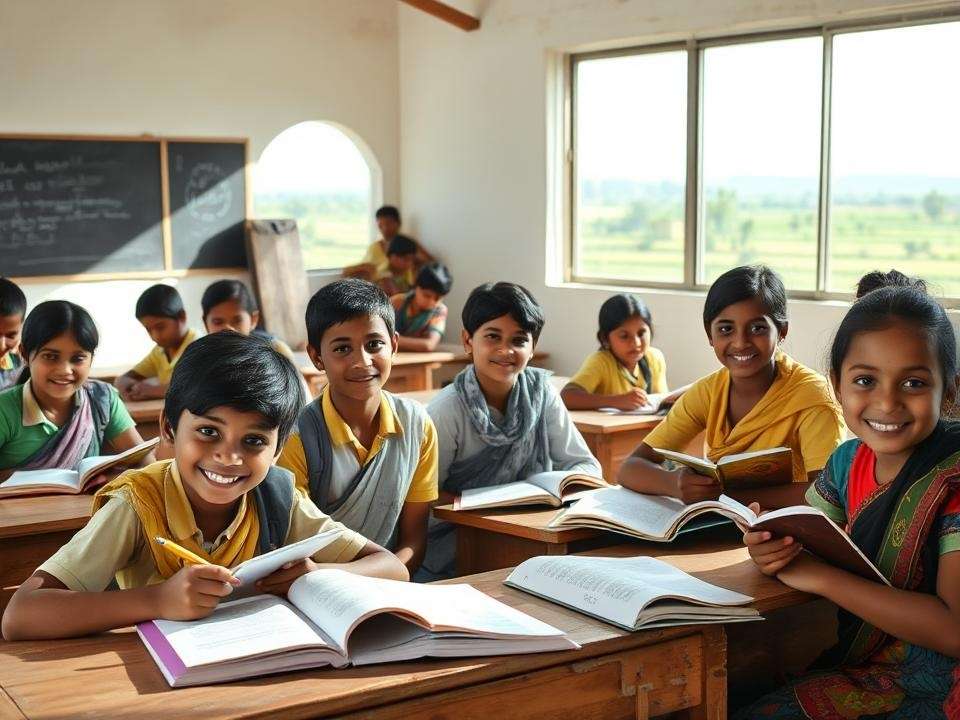Prime Minister Shri’s Battle


Pradhan Mantri India’s Rising School (PM SHRI) Program is a bold and visionary program of the central government to revolutionize education in India. It aims to upgrade 14,500 public schools in accordance with the 2020 National Education Policy (NEP), promising state-of-the-art infrastructure: smart classrooms, science labs and digital libraries – while advocating holistic, competency-based learning. PM Shri’s budget reached Rs 181,280 crore in five years, aims to raise public education to global standards to ensure every child has access to quality learning opportunities. This is a program that has the potential to change lives and improve the athletic environment for students across the country.
Early results are already promising. According to the Ministry of Education, 40 states in Shri schools in five states – Manipur, Tripura, Rajasthan, Meghalaya and Madhya Pradesh – have seen a 75.8% increase in student enrollment since they joined the program. In 2020-21, these schools jointly enrolled 14,258 students. By 2023-24, this number has soared to 25,065. In Manipur, a school reported an increase in enrollment by 295%, from 173 students in 2020-21 to 684 students in 2023-24. Similarly, in Rajasthan, dropout rates in PM Shri schools have dropped by 15%, thanks to innovative approaches such as child tracking systems and nutritional gardens. Early assessments in Andhra Pradesh and Maharashtra also showed 10–15% of scientific and math scores. These successes demonstrate that PM Shri’s ability to bridge the gap between public and private education provides students with the tools to thrive in a competitive world.
Regional political parties: Turn opportunities into obstacles
Despite this reliable record, regional parties in some states have prevented the program from rolling out nationwide – not because of its merits, but because of their focus on narrow och. In Tamil Nadu, for example, the government refused to sign the PM Shri Memorandum of Understanding (MOU), citing the NEP’s three-language formula. Chief Minister Stalin positioned it as a stance against cultural imposition, although union education minister Dharmendra Pradhan clarified at a parliamentary meeting in March 2025 that the policy was flexible and allowed states to choose languages based on local environments. This story is repeated in Kerala and West Bengal, where regional parties dug up on their heels, usually with national autonomy or resistance to the excessive resistance to the central government. These objections mask the program’s decentralized structure, which allows schools to tailor reforms to the community. By choosing to go out, these parties not only refuse to cooperate—they deny that students have access to resources and opportunities that have changed classrooms elsewhere.
The centre’s move to link Samagra Shiksha Abhiyan funding with PM Shri involvement is a pragmatic push to collaboration, but regional leaders use it as coercion, expanding divisions rather than seeking common ground. This boycott involves not only policy differences, but also political leverage. During the budget meeting, Tamil Nadu MPs held protests in Parliament, escalating manageable discussions into public wonders. Meanwhile, the central government has maintained its doors, inviting dialogue and providing flexibility for funding and language policies. But regional leaders largely rejected these proposals, prioritizing short-term political victory over long-term benefits for students.
The PM Shri program reflects the best of cooperative federalism, and education is a simultaneous theme that flourishes when the center and the country go hand in hand. The central government showed pragmatism and openness, ready to adjust the plan to address the concerns of specific countries. For regional parties in Tamil Nadu, Kerala and West Bengal, this is an opportunity to step up efforts, put the little teacher aside, and join the campaign that has proven its worth elsewhere.
States must recognize their potential to improve the quality of government education, especially in underserved areas, rather than lowering PM Shri to a policy that tug of war. The central government is based on vision and dedication. As classrooms in participating states flourish, the reluctance of regional parties stands out. Prime Minister Shri’s success is due to whether the state sees it as an opportunity for reform or forced resistance. By interacting constructively with the center, states can ensure that education, rather than politics, remains a priority.
Disclaimer
The views expressed above are the author’s own.
End of the article







